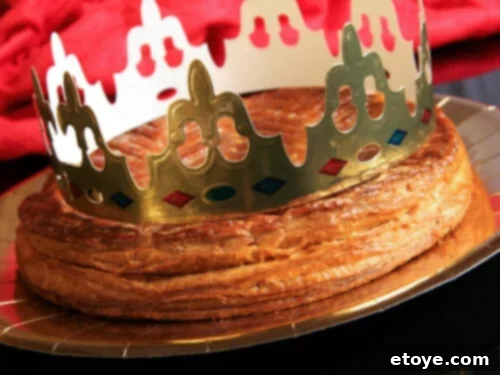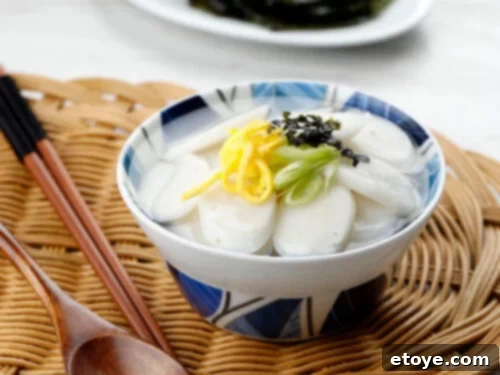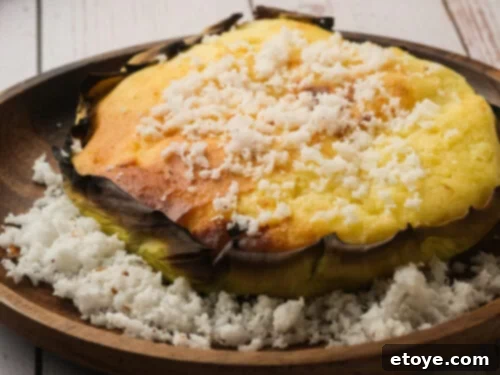As someone deeply rooted in a Chinese background, a culture vibrant with rich traditions, ancient superstitions, and a fascinating array of specific customs for Chinese New Year, I’ve always been captivated by the profound concept of good luck foods. In our cherished tradition, certain dishes aren’t merely sustenance; they are powerful symbols believed to usher in prosperity, bestow longevity, and even, delightfully, promise a significant salary increase – a wish I’m sure many can relate to!
For those eager to delve deeper into these culinary portents, I invite you to explore my previous insights into the intricate world of Chinese New Year foods and discover what to eat for a truly prosperous year. However, the intrigue of New Year’s culinary traditions extends far beyond a single culture. Across the globe, diverse nations embrace their unique gastronomic rituals to usher in the new year.
From the spirited grape-eating countdown in Spain to the hopeful slurp of long soba noodles in Japan, every single bite taken during this festive period is steeped in profound meaning and carries a heartfelt wish for the twelve months ahead. It’s a universal language spoken through food, a collective aspiration for a brighter future.
So, prepare your palates and join me on an exhilarating, delicious journey around the world. We’ll explore the fascinating, sometimes quirky, and always meaningful realm of good luck foods traditionally consumed for New Year’s celebrations. Let’s embark on this culinary adventure, eating our way to a year filled with fortune, health, and happiness, one delectable tradition at a time!
Spain: Las Doce Uvas de la Suerte (12 Lucky Grapes)

In the vibrant heart of Spain, the arrival of midnight on New Year’s Eve, known as Nochevieja, is heralded by far more than just revelry. It’s marked by a delightfully challenging and deeply ingrained culinary tradition: “las doce uvas de la suerte,” or the “twelve lucky grapes.” As the iconic clock tower in Madrid’s Puerta del Sol begins its solemn chimes, signaling the passage into the new year, Spaniards across the country engage in a unique race against time. The objective? To consume one grape for each of the twelve clock strikes – a feat that proves surprisingly difficult for many!
This charming custom, which traces its origins back to the 1880s, playfully echoes the sophisticated French tradition of enjoying grapes and champagne on special occasions, but with a distinctive Spanish twist. Initially, this ritual was a favored pastime among Madrid’s bourgeoisie, an elegant way to welcome the new year. However, it quickly transcended social classes, adopted by the masses as a spirited and somewhat satirical gesture, with people gathering in public squares to participate collectively. The challenge often leads to comical scenes of hurried chewing and laughter as families and friends try to keep pace with the striking clock.
From its humble, even satirical, beginnings, the twelve grapes ritual has blossomed into a cherished and widespread practice. Each grape symbolizes good luck and prosperity for a specific month of the coming year, making the successful completion of the challenge a potent symbol of hope for the entire year. Its popularity has also sailed across the Atlantic, becoming a beloved part of New Year’s Eve festivities in numerous countries across Latin America, cementing its status as a truly global symbol of good fortune.
Southern United States: Hoppin’ John

In the American South, the arrival of New Year’s Day is inextricably linked with a comforting and historically rich culinary tradition: the consumption of black-eyed peas, most famously prepared in a hearty dish known as Hoppin’ John. This meal is not merely a regional favorite; it’s an act steeped in deep historical significance and powerful symbolism, offering hope for the year ahead.
Legend and history intertwine to explain this tradition. During the challenging times of the Civil War, black-eyed peas were often the only readily available food source, sustaining many through hardship. Eating them today is seen as a poignant nod to resilience and the ability to “make do” and overcome adversity. When cooked, these humble peas tend to swell, a characteristic that has come to symbolize growing prosperity and expansion of good fortune. The dish typically features tender black-eyed peas stewed with diced pork (often ham hock or bacon), onions, and rice, creating a flavorful and satisfying meal.
Hoppin’ John is rarely served alone. It is traditionally accompanied by other symbolic elements that amplify its lucky message. Collard greens, vibrant and leafy, represent paper money, signifying financial wealth. Cornbread, golden and rich, symbolizes gold, further enhancing the wish for prosperity. Together, this trio forms a hopeful, delicious, and deeply comforting Southern tradition that speaks volumes about endurance, gratitude, and an optimistic outlook for a prosperous new year. It’s a testament to how food can embody a community’s history and aspirations, serving up resilience and looking ahead with every delicious bite.
Japan: Toshikoshi Soba (Year-Crossing Noodles)

In Japan, New Year’s Eve, known as Ōmisoka, is a time for quiet reflection and the cherished ritual of enjoying a special dish: Toshikoshi soba, or “year-crossing noodles.” These slender buckwheat noodles are far more than just a meal; they are infused with profound symbolism, embodying wishes for a long, healthy, and prosperous life in the year to come. The extraordinary length of the noodles itself is the primary representation of longevity, encouraging diners to slurp them down without biting through, lest they cut short their good fortune.
The tradition of eating Toshikoshi soba dates back to the Edo period (1603-1868) and carries a multi-layered meaning. Beyond wishing for a long life, it symbolizes a clean break from the past year’s regrets and hardships. The delicate nature of soba noodles, which are relatively easy to cut or break while eating, represents the hope of cleanly severing ties with the difficulties and lingering troubles of the preceding year, allowing for a fresh start. It’s a culinary act of purification, letting go of the old to embrace the new.
As families gather around steaming bowls of these nourishing noodles, often served hot in a savory dashi broth with toppings like scallions, tempura, or fish cake, there’s a tangible atmosphere of quiet contemplation. It’s a moment to reflect on the journey of the year that has passed and to look forward with optimism and renewed spirit to the adventures that lie ahead. Each mindful slurp of Toshikoshi soba is not just a taste of centuries-old tradition; it is a mouthful of hope, renewal, and a silent prayer for good fortune in the unfolding year. 🍜
The Netherlands: Oliebollen

As New Year’s Eve descends upon the Netherlands, a delightful aroma fills the crisp winter air: the unmistakable scent of freshly fried Oliebollen. These aren’t just any fried dough; they are an iconic part of Dutch New Year celebrations, often likened to spherical magic. These deep-fried dough balls, frequently studded with raisins or currants and generously dusted with powdered sugar, are believed to possess a rather charming superpower: the ability to ward off malevolent spirits and bad luck for the upcoming year.
The intriguing tradition has roots stretching back to ancient Germanic mythology. According to folklore, during the darkest days of winter, the pagan goddess Perchta would fly through the night skies with her entourage of spirits. She was said to attempt to slice open the bellies of anyone she encountered. However, those who had consumed the fatty oliebollen were supposedly protected, as the richness and fat from the doughnuts would make her sword slide harmlessly off their stomachs. Thus, eating oliebollen was not merely a tasty treat; it was a vital protective charm, an edible shield against the darkness and dangers of the turning year.
Today, as street stalls pop up across cities and towns, offering these warm, fluffy, and slightly chewy delights, the tradition continues with gusto. Eating oliebollen on New Year’s Eve is an essential rite of passage, a comforting ritual that brings families and friends together. It’s a sweet, comforting, and undeniably delicious way to ensure safety and good fortune. After all, if indulging in delightful doughnuts keeps evil spirits at bay, who could possibly resist? Count me in for a taste of that protection!
Italy: Cotechino con Lenticchie

When the clock grandly strikes midnight on New Year’s Eve across Italy, one particular dish takes center stage on countless celebratory tables: Cotechino con Lenticchie. This hearty, rustic dish, featuring succulent pork sausage generously served atop a bed of glistening lentils, is far more than just a culinary delight; it’s a powerful symbol steeped in wishes for good luck and abundant prosperity in the year ahead. Each element of the dish carries its own significant meaning, making it an indispensable part of the Capodanno (New Year) festivities.
The lentils are the star of the prosperity show. Their small, round, and flat shape strikingly resembles tiny coins, directly associating them with money, wealth, and financial fortune. The more lentils one consumes, the greater the hope for riches in the coming year. Complementing this monetary symbol is the cotechino, a rich, flavorful, and often spiced pork sausage. Pork, in many cultures, is considered a symbol of abundance and progress because pigs root forward when they forage, signifying moving ahead rather than backward. The generous, savory nature of the sausage symbolizes life’s bounties, richness, and the fulfillment of desires.
This enduring New Year’s tradition, which originates from the Emilia-Romagna region of Italy and dates back centuries, is enjoyed almost immediately after midnight. It offers a tangible promise of good fortune and deliciousness in every single bite. The warmth and richness of Cotechino con Lenticchie not only satisfy the palate but also warm the soul, uniting families in a shared hope for a flourishing future. Indeed, few culinary experiences offer a more direct and delicious path to eating your way to a prosperous new year than this beloved Italian classic.
France: Galette des Rois (King’s Cake)

In France, the festive period extends beyond New Year’s Day, culminating with the celebration of Epiphany, traditionally observed on January 6th. This significant day, also known as the “Fêtes des Rois” or Three Kings Day, commemorates the pivotal moment when the three wise men first encountered baby Jesus and presented their revered gifts. It’s a holiday steeped in rich historical and religious tradition, marked by joyous gatherings and, most importantly, the unveiling of its culinary centerpiece: “La Galette des Rois,” or King’s Cake.
This is no ordinary cake; it is a masterpiece of French patisserie, a flaky, golden-brown puff pastry marvel typically filled with a rich, creamy frangipane (almond cream). Its exquisite taste is matched only by the excitement of the ritual surrounding its consumption. Hidden meticulously within its sumptuous layers is a tiny ceramic figurine, known as a fève. The person lucky enough to find this small trinket in their slice is crowned “king” or “queen” for the day, receiving a decorative paper crown and often the privilege of choosing the next person to be crowned or the next cake. This signifies a year blessed with special luck and prosperity.
The tradition goes even further: a child often hides under the table, designating who receives each slice, ensuring fairness and adding an element of playful suspense to the occasion. This delicious dessert, enjoyed throughout January, is more than just a treat for the taste buds; it’s a delightful nod to a momentous occasion in Christian history, serving as a sweet harbinger of good fortune and signaling the official start of the lively Carnaval season. It’s a beautiful blend of religious observance, family fun, and culinary excellence.
South Korea: Tteokguk (Rice Cake Soup)

In South Korea, there’s a wonderfully comforting and deeply symbolic way to welcome the New Year, particularly the Lunar New Year: by savoring a steaming bowl of Tteokguk, or rice cake soup. This warm, nourishing, and flavorful soup, brimming with thinly sliced rice cakes, signifies not only a fresh start but also a unique cultural milestone: it’s how one officially gets a year older. Yes, in Korea, age is traditionally counted from the first day of the Lunar New Year, so you’re not considered a year older until you’ve had your Tteokguk! It’s like a birthday and New Year’s celebration rolled into one heartwarming bowl, a delicious ritual that marks the passage of time and the renewal of life.
The distinctive, oval-shaped slices of rice cake (tteok) are central to its symbolism. Their white color represents purity and a clean slate, while their coin-like shape is believed to usher in prosperity and good fortune for the year ahead. The chewy texture of the tteok symbolizes longevity and a strong, enduring life. The soup itself is often prepared with a clear beef broth, garnished with various toppings such as shredded beef, thinly sliced egg ribbons (jidan), and gim (seaweed strips), adding depth of flavor and vibrant color.
During the Lunar New Year, Tteokguk plays a crucial role in ancestral rites known as Charye. Families gather to perform these ceremonies, offering bowls of Tteokguk to their ancestors as a sign of respect and gratitude before sharing the meal together. This communal act reinforces family bonds and honors heritage. As you partake in this savory soup, you’re not just enjoying a tasty tradition; you are actively participating in a cultural rite that marks your journey into a new year and embraces a “new you.” It’s a profound and delicious way to celebrate renewal, family, and the cycle of life.
Greece: Vasilopita (St. Basil’s Cake)

In Greece, the New Year arrives with a very special and eagerly anticipated sweet treat: Vasilopita, meaning “Basil’s Bread.” This traditional cake is not only a culinary delight but also a centerpiece of celebration, deeply intertwined with the legend of Basil the Great, the revered archbishop of Caesarea in Cappadocia (modern Turkey).
The compelling legend behind Vasilopita tells of a time of severe famine when the tyrannical emperor of Caesarea imposed a cruelly heavy tax upon his suffering people. It was St. Basil who bravely confronted the emperor, demanding repentance and justice for the townspeople. Miraculously, the emperor relented, canceled the oppressive tax, and returned all the coins and jewelry that had been collected from the people to St. Basil. Faced with the challenge of returning each valuable to its rightful owner, St. Basil devised an ingenious plan: he instructed his helpers to bake all the collected coins and jewels into one enormous pita. He then called all the townspeople to the cathedral, and after a Divine Liturgy, he blessed and meticulously cut the Vasilopita. Miraculously, each person’s slice contained their exact valuables, returned to them through divine intervention.
Inspired by this heartwarming tale of generosity and divine justice, the modern Vasilopita is baked with a single coin (often a simple coin wrapped in foil) hidden within its sweet, bread-like layers. The texture of the cake itself varies by region, sometimes a fluffy, brioche-like bread, other times a more dense and aromatic cake, often flavored with orange zest or mahlab. The tradition dictates that the cake is blessed and then carefully sliced, with the first pieces often reserved for Christ, the Virgin Mary, and St. Basil himself, followed by slices for each family member in order of age.
The excitement mounts as each member eagerly awaits their slice, hoping to be the lucky coin finder. Discovering the coin is believed to bring a year’s worth of extraordinary good luck, prosperity, and blessings. It’s a cherished way to inaugurate the year, filled with anticipation, shared joy, and a touch of friendly competition. And indeed, if you’re the fortunate one whose slice contains the coin, your year is already off to a truly promising and auspicious start!
Norway and Denmark: Kransekage (Wreath Cake)

In Norway and Denmark, New Year’s celebrations are often graced by a truly magnificent and distinctive culinary masterpiece: the Kransekage, or “Wreath Cake.” This isn’t just any cake; it’s a stunning, towering confection, meticulously constructed from concentric rings of chewy, almond-based dough, stacked one upon another to form a graceful cone or pyramid shape. Often elegantly decorated with white icing drizzles, miniature flags, and even small firecrackers, the Kransekage is a showstopper, designed to impress and delight at any New Year’s Eve gathering.
The Kransekage is made from marzipan-like dough, primarily almonds, sugar, and egg whites, which gives it a unique, firm yet moist and chewy texture. Each ring is baked separately, then carefully assembled to create its iconic, imposing structure. While its visual appeal is undeniable, its presence also carries a deeper significance. It is widely believed to usher in good fortune and prosperity for the year ahead, making it an essential element of the festive table.
Beyond its symbolism, the Kransekage is a testament to the joy of shared celebration. Biting into its rich, sweet, and intensely almond-flavored layers isn’t merely savoring a delicious treat; it’s participating in a cherished tradition that is as much about hopes and dreams for the future as it is about exceptional flavor. It’s often used for other major celebrations too, like weddings and baptisms, underscoring its role as a symbol of joy and new beginnings. Breaking off a piece of Kransekage with family and friends at the stroke of midnight is a sweet, memorable way to welcome a new chapter, promising sweetness and good luck in the year to come.
Philippines: 12 Round Fruits, Pancit & Rice Cakes

In the Philippines, New Year’s Eve, locally known as Media Noche, is far more than just a celebration; it’s a vibrant, boisterous, and deeply symbolic feast of traditions, where each culinary element carries its own profound significance. As the clock inexorably ticks towards midnight, Filipino families gather for their special Media Noche meal, a joyous occasion that is as much about savoring delicious food as it is about meticulously ushering in good luck and abundant blessings for the upcoming year.
The undeniable star of this festive spread is a meticulously arranged platter of twelve round fruits, one for each month of the year. The spherical shape of these fruits – ranging from apples and oranges to grapes and melons – is a direct and powerful nod to coins, symbolizing prosperity, wealth, and continuous flow of good fortune. It’s like a delicious, colorful invitation for financial abundance to grace the household, one perfectly round fruit at a time. Families make an effort to display a diverse selection, believing variety also brings different blessings.
But the festive dining traditions don’t stop with fruit. Central to the Media Noche table is Pancit, a beloved noodle dish. Beyond its undeniable deliciousness, Pancit is packed with potent meaning: its long strands symbolize a long life and good health, provided they are eaten without breaking. Filipinos enjoy various types of Pancit, from stir-fried bihon to saucier canton, each offering a unique flavor profile but carrying the same wish for longevity. And, of course, no Filipino New Year’s feast would be complete without an assortment of sticky rice treats, collectively known as kakanin.
From the sweet, dense biko to the savory, slightly charred bibingka (often pictured), and the layered, colorful sapin-sapin, these glutinous rice delights are all about promoting strong, unbreakable family bonds and ensuring that good luck “sticks” to you throughout the year. It’s a beautifully tangible metaphor, truly – the stickier the treat, the tighter and more enduring the family ties and the more blessings that cling to one’s life. The entire Media Noche is a joyous symphony of flavors and beliefs, reflecting the Filipino spirit of optimism, family unity, and a fervent hope for a blessed new year.
A Culinary World Tour – No Passport Required!
From the exhilarating grape-filled countdowns in Spain to the profoundly heartwarming Media Noche feasts in the Philippines, each of these New Year’s good luck foods stands as a vibrant testament to the incredibly rich tapestry of global cultures and the universal human joy of welcoming a fresh start. These traditions, diverse in flavor and origin, are united by a common thread: the shared human desire for prosperity, health, and happiness in the year ahead.
Whether you’re inspired to try one of these captivating culinary traditions yourself this New Year’s Eve, or simply enjoyed learning about the fascinating stories and symbols behind them, I sincerely hope this delicious journey has added a dash of excitement and inspiration to your New Year’s food ideas. As we eagerly count down to the upcoming year, let’s embrace these wonderful culinary customs that promise a future brimming with good fortune, robust health, and boundless happiness.
Here’s to hoping your New Year’s celebration – whether it’s a quiet, intimate gathering, a loud and lively party, or somewhere wonderfully in between – is as flavorful, promising, and memorable as these fantastic global traditions. Happy New Year, my fellow foodie enthusiasts! May your upcoming year be filled with as much hope, joy, and deliciousness as these delightful New Year’s customs from around our wonderful world. 🌍🎉🍲
